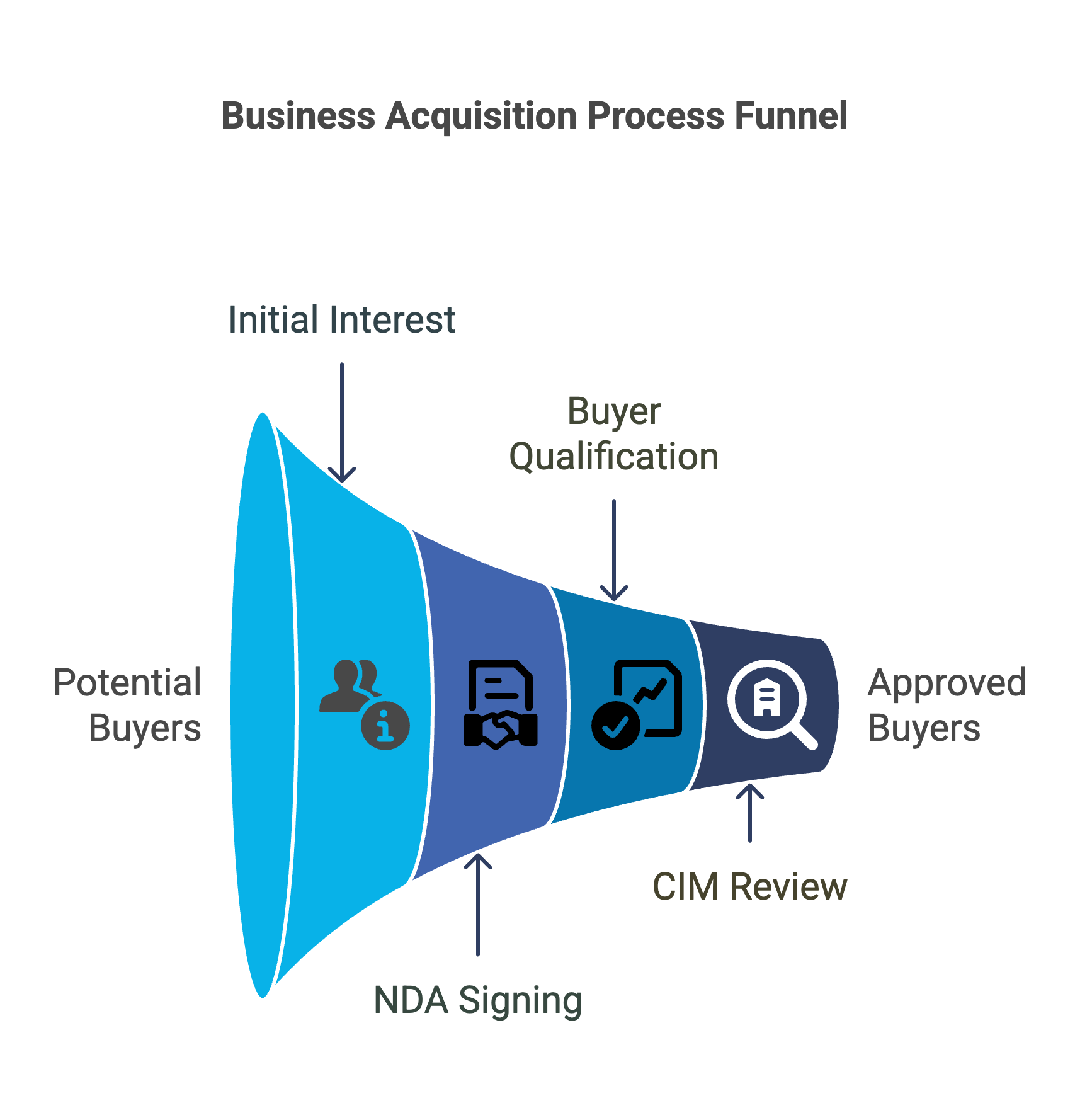
The role and practices around confidentiality is one of the most critical factors to consider when selling a healthcare business. Employees, competitors, and/or patients prematurely finding out about a sale could cause disruptions, uncertainty, or even a decline in business performance and subsequently, the market value of the business.
One of the key tools used to protect a client’s confidentiality during an M&A process is the utilization of a Blind Summary, often referred to as a Teaser, in our marketing efforts. This document provides a high-level overview of the business without revealing any identifying details, allowing qualified buyers to make an educated level of determination in pursuing it further.
What Is a Blind Summary?
A Blind Summary is a carefully crafted document that gives potential buyers an overview of a business while keeping its identity anonymous. The goal is to generate initial interest from qualified buyers without exposing sensitive details on the acquisition opportunity.
A Blind Summary acts as a first step in the buyer qualification process. It provides just enough information for an interested party to decide whether they want to move forward and pursue additional details on the target business. However, buyers must sign a Non-Disclosure Agreement (NDA) and go through a thorough vetting and approval process before gaining access to any details that disclose the identity of a business. Once an NDA is in place and approvals are obtained, the buyer receives access to a secure data room containing a Confidential Information Memorandum (CIM), which provides a full breakdown of the business, including its financials, operations, and competitive positioning.
What Information Is Included in a Blind Summary?
A well-structured Blind Summary strikes a balance between being informative and maintaining confidentiality. While it needs to capture the attention of potential buyers with important financial and geographic details, it must also prevent anyone from identifying the business.
Key Components of a Blind Summary
- Geographic Scope – Generalized location details, such as "multi-location healthcare provider in the Southeast" or "Home Health and Hospice provider in the Greater Chicago area."
- Industry & Services – A broad description of what the business does, such as "Leading Autism Services provider" or "Established Medical Recruiting and Staffing Agency"
- Financial & Clinical Overview – High-level financial metrics like revenue and EBITDA indicate the business's financial health while census or patient details elaborate on service capacity and stability.
- Operational Overview – Brief mention of relevant staffing details, tenured management, and responsibilities of ownership. Additionally, seller intentions can be included to indicate their intention of continuing with the business or removing themselves entirely.
What Is Not Included in a Blind Summary?
To maintain confidentiality, the Blind Summary avoids:
- Business name or branding details
- Specific locations of offices, clinics, or facilities
- Client details
- Any proprietary business data that could be linked back to the seller, their business, or their location
Why Is a Blind Summary Important?
A Blind Summary plays a crucial role in the M&A process by helping sellers maintain control over the flow of information. Without this step, sellers risk prematurely disclosing sensitive details to unqualified buyers—or worse, to competitors who may not have genuine acquisition intentions.
Protecting Confidentiality
The biggest advantage of a Blind Summary is that it prevents early exposure of the sale. If word of a prospective sale gets out too soon, it could cause unnecessary concerns among staff, referral partners, or patients. Competitors might also attempt to leverage the information to gain an advantage in the market.
Attracting the Right Buyers
The utilization of a Blind Summary allows us to be comprehensive in our marketing efforts, ensuring that it reaches every corner of the market without any concerns of disclosing our client’s identity. This helps sellers avoid wasting time with unqualified buyers or investors who lack the resources to complete a transaction as they must indicate further interest based on the high level details of the business, before any sensitive details are disclosed.
Controlling the Flow of Information
By requiring a signed NDA before disclosing any specific business details, sellers can ensure that only vetted buyers receive confidential materials. This gives the seller greater leverage in negotiations while protecting sensitive financial and operational data.
When Is a Blind Summary Used?
A Blind Summary is typically the first tool used in a formal marketing process. It is one of the first documents that potential buyers receive when evaluating an opportunity.
The process generally follows these steps:

- Initial Buyer Interest – Potential buyers are presented with the Blind Summary to assess whether the business aligns with their investment goals.
- NDA Signing – If a buyer expresses interest, they must sign a Non-Disclosure Agreement before accessing detailed business information.
- Buyer Qualification & Discussions – We evaluate the buyer's background, financial ability, and strategic fit before presenting them and a candidate to the seller for approval to receive any sensitive details on the business.
- Confidential Information Memorandum (CIM) Review – After a thorough vetting and approval, the buyer receives an invitation to a secure data room which contains the CIM, which details in-depth financials, operational data, and strategic insights.
This structured approach ensures that sensitive details are only shared with buyers who have demonstrated genuine interest and the financial and strategic capability to complete a transaction.
Common Mistakes to Avoid When Using a Blind Summary
While Blind Summaries are designed to protect sellers, they must be crafted carefully to avoid unintended consequences. Some common mistakes include:
- Providing Too Many Identifiable Details – If the Blind Summary is too specific, competitors or industry insiders may recognize the business, defeating the purpose of confidentiality.
- Being Too Vague – While confidentiality is key, the document still needs to provide enough information to capture a buyer's interest. An overly generic summary might discourage serious inquiries.
- Failing to Define Buyer Criteria – Sellers and their advisors should have a clear understanding of their M&A goals to best determine the ideal buyer profile for their business and unique M&A goals.
Final Thoughts
A Blind Summary is a critical tool for selling a healthcare business while maintaining confidentiality and control over the M&A process. It serves as the first step in attracting the right buyers while ensuring that sensitive information remains protected.
If you're considering selling your healthcare business, working with an experienced M&A advisory team can help you structure the sale effectively and protect your interests.
Ready to take the next step? Contact us today to learn how we can guide you through the selling process with confidentiality and confidence.




